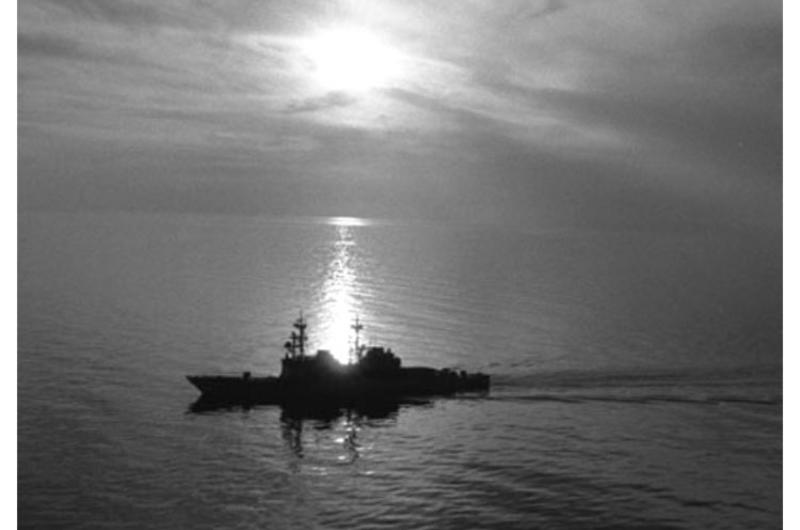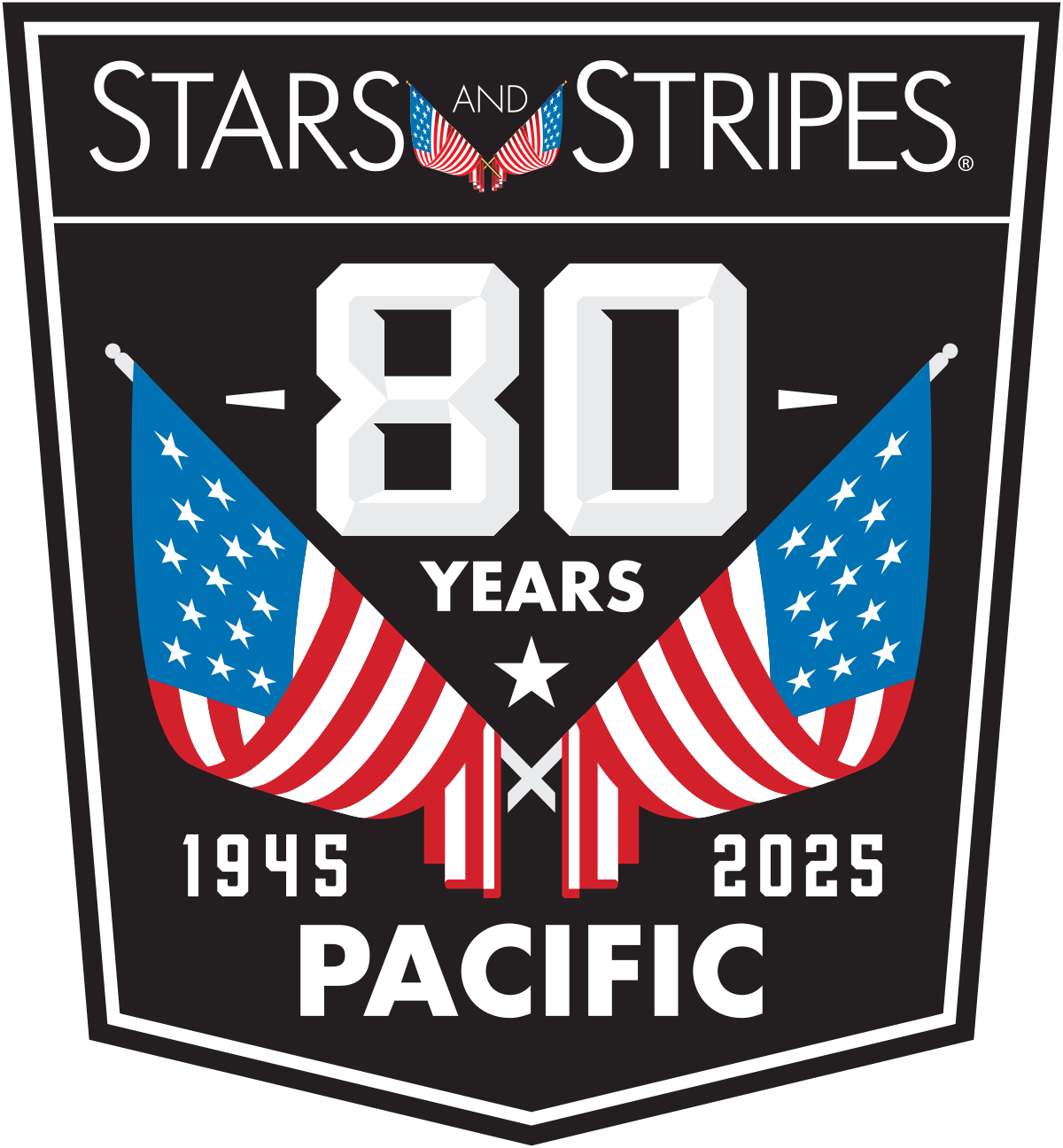'Skunk hunt' is routine for USS Fife's crew

The USS Fife, seen from a helicopter, is silhouetted against a Gulf of Oman sunset in 1990.
By Rob Jagodzinski | Stars and Stripes December 6, 1990
ABOARD THE USS FIFE — Under a bright half moon, the Gulf of Oman shines like liquid silver as this destroyer cruises across the waterway on its nightly search for skunks, bogies and goblins.
On the bridge, a radarman's voice carries through the darkness:
"Officer of the deck, we've spotted a new skunk at bearing one one four, range 41,600 yards."
"Aye, change course one-twenty degrees," says Lt. Jeff Tall, ordering the ship on an intercept path.
Tall, 29, is a fire control officer from Leominster, Mass., and on this night he's in charge of the watch team aboard. The pilot house is unlit except for the glow of a few red bulbs and dim green radar screens. Cool breezes drift in through an open passageway.
Tall explains that skunk is Navy jargon for an unidentified ship appearing on radar, while bogies are unknown aircraft and goblins are submarines.
The Fife's primary mission in other waters is submarine hunting. But the shallow Persian Gulf region is a poor habitat for subs, so few if any of them ever enter the area.
The destroyer also scans the skies for hostile aircraft, but none have been sighted, as the Gulf of Oman lies far out of range of Iraqi warplanes.
So the Fife's crew devotes much of its time to spotting and intercepting commercial ships in enforcement of the U.N. embargo of Iraq. The Fife and other escort ships in the USS Midway Battle Group have been steaming through Mid eastern waters since arriving from Yokosuka Naval Base, Japan, on Nov. 1.
The destroyer uses radar and visual sightings from its helicopter, as well as shipboard radar, to spot merchant vessels sailing through the region.
"I'VE SEEN some hellacious big ships out here — some of these tankers displace 395,000 tons empty," Tall says. "That's big compared to a 95,000-ton aircraft carrier."
Tall adds that the Fife has "come upon a lot of fishing boats too. They're wooden so they don't `paint' (show up) on our radar."
He says this has caused some navigation problems, particularly in the Persian Gulf, which is the home to fleets of these vessels.
Iraqi vessels, however, are nonexistent in the Gulf. In fact, Navy officials say they have come across no Iraqi tankers or cargo ships in the region since October because the vessels could not hide from the embargo ships of the multinational fleet.
Iraqi ships "have a pretty slim chance of getting through" the Persian Gulf undetected, says Lt. Cdr. Lee Rosenberg, 36, the ship's executive officer. "There's only a few ports to go to in Iraq and occupied Kuwait," says the Atlanta native.
The five warships in the Midway Battle Group have taken part in more than 300 radio intercepts, but have made no boardings in their month long Gulf patrols.
During a radio intercept, the destroyer sets a course for a ship that it has detected on radar. After closing to within 15 miles, the Fife flashes a light beam to get the unknown ship's attention. Then the Fife radios the vessel and asks its origin, destination, registry and cargo.
IF THE FIFE'S watch officer is satisfied with the answers, he lets the ship pass. If unsatisfied, the destroyer tails the cargo vessel while the crew awaits orders from Navy central command in Bahrain. Actions like shots fired across the bows of reluctant ships or boardings, only take place with instructions from central command.
Back on the bridge Chief Petty Officer Michael Cleveland, a sonar technician from Memphis, is the junior officer of the watch.
During radio inquiries, Cleveland explains that "the captain wants to make sure that you are polite with everyone you intercept, that you get the information you want and then go on your way."
Cleveland, 28 said that "at a medium pace on a four-hour watch we intercept three or four people. The most I've done is nine of these guys. Nine (intercepts) is a really busy watch, but then I like it when it's busy — gives you something to do."
Behind Cleveland a radarman sounds the distance between the destroyer and the ship it will intercept.
"Eleven miles, aye," says Tall. "How about lighting up and flashing him," he says, referring to use of the signal light.
At once the beam flickers across the water as a signalman works the shutters.
Then Cleveland goes to work:
"Merchant vessel off my starboard beam on a course of 1-4-8, speed 16 knots, this is U.S. Navy warship 11 nautical miles off your port beam flashing you with white light. Request you switch to channel one zero over."
A tinny voice answers the radio call: "Roger U.S. warship. This is Bauriga, call sign is five-lima victor-foxtrot, over."
"Roger, sir, request your flag and port of registry, over."
"My flag is Liberia, port of registry is same."
Cleveland then asks the ship's cargo, port of origin and destination.
"My cargo is Arabian light and Arabian medium crude (oil). My last port of call is Juaymah (Saudi Arabia), and my destination is New Orleans."
"He's going to New Orleans," Cleveland says to himself. "I don't have a problem with that."
Then to the merchant "Roger sir, thank you for your cooperation and have a pleasant watch. This is U.S. warship standing by channel one-six. Out."


